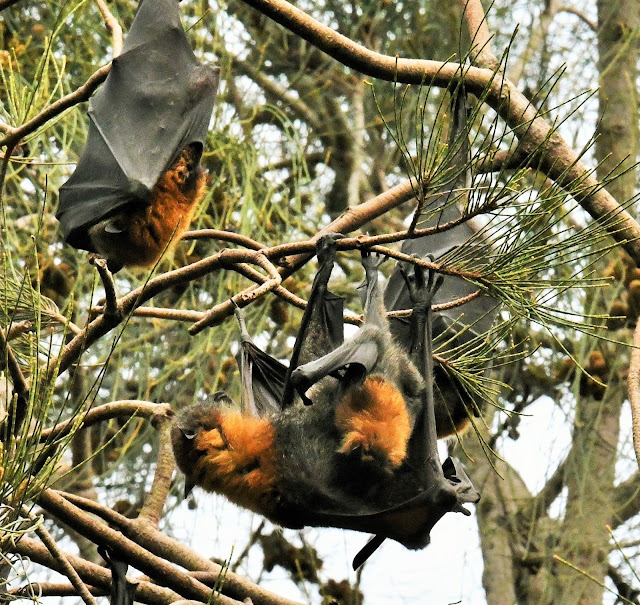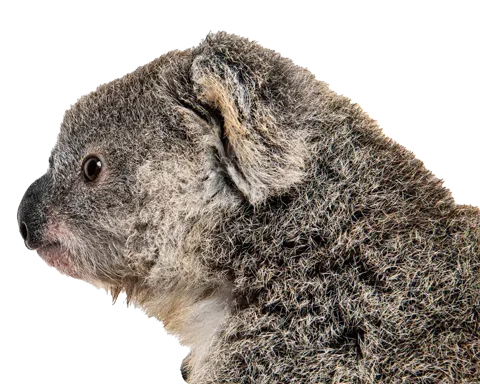
Have you heard about the important role of flying foxes in the regeneration of the flora
destroyed by the bushfires of 2019/2020? It definitely didn't make the local news. We saw the
koalas rescued from the fires, the kangaroos with bandages on their feet and the wombats getting
used to new habitats. The reporting on flying foxes killed by the fires or the ensuing heat stress
event was shared about as much as the reporting on the native reptiles we lost -for example the
Eastern Brown snake or the Red Bellied Blake snake. Flying Foxes are a controversial subject in
any given conversation and raising money for the care of these amazing animals is harder than
keeping an Aussie inside on a nice sunny day. It's bloody difficult. But the Wildlife Heroes
Project supported by the Foundation came to the rescue of many native animals affected by last
year's bushfires with their Large Durable Asset Grant for NSW.

Sydney Metropolitan Wildlife Service (SMWS) is one of two organisations in Greater Sydney
dedicated to the rescue, rehabilitation and release of injured native wildlife. SMWS is a total
volunteer organisation and exists on donations from the public and grants. Ironically, flying
foxes are down on the list of priorities when it comes to donations. The COVID-19 Pandemic
moved them even further down the list of cute animals to use on brochures. Grey Headed
Flying Foxes (GHFF) are the largest of Australian bats. These amazing animals are important
pollinators and seed dispersers, and are essential for forest pollination. Remember the hundreds
of thousands of hectares we lost in the recent bushfires? These animals perform much needed
jobs in the dead of night while we all sleep soundly in our own beds. A GHFF can fly 50-100km
one way each night to find the food to sustain them. Did you know their digestive systems
process food in 20 (twenty!) minutes? That’s heaps of seeds shared along that 100km path they
fly each night!

Remember our dedication to the rescue, rehabilitation and release of injured native animals?
How are flying foxes injured? You never see them during the day, right? Many adults are caught
in “wildlife unfriendly” netting or tangled in barbwire. Did you know there is safe netting for
wildlife? If you can put your finger through a hole in your netting, that netting is guaranteed to
injure or kill a flying fox. A female flying fox has one job…well, two, if you count long distance
pollinating. Her second job is carrying a flying fox pup to term, giving birth upside down, and
catching the wiggling newborn in her wings. For the next 3-4 months, she is lactating to feed her
pup which she carries attached to her nipple under her wing. Yep, 24/7! At least until they reach
the age (around 8-12 weeks) when it can be left at the camp with the other pups, while parents
make their 100km round trip to find food.. Sometimes if a mum is startled by human
intervention, she will quickly take flight hitting anything in her path. Often, her pup is hit by a
tree branch, causing it to be pulled from its mum – or, it can fall on its own. When this happens,
these pups come into care with our volunteers who raise the pup until it’s time to go to creche to
learn how other bats live. Creche…what and where is that?

In greater Sydney, there’s only one flying fox rehabilitation centre, and it’s located in Lane
Cove National Park. There are two aviaries on the property: one for adults, and a smaller one for
pups in creche. The large aviary was originally built as a flight aviary for birds. SMWS used it as
a rehabilitation area for native birds, along with another area which had many habitats for
recovering native wildlife. Eventually, the aviary was repurposed as a flight aviary for flying
foxes, and SMWS received a grant to build the smaller aviary close to the large one. All of this
was 10-15 years ago, and money has been very tight ever since. The flying foxes enjoy the upper
half of the aviary where they hang in the sunlight during the day, move to the forward section of
the aviary to eat the multiple kilograms of fruit cut by our volunteers, and then enjoy playing and
flying from one end to the other. The problem is, the concrete floors have deteriorated over time,
and are now as slippery – if not more slippery – as an ice rink. Trust me, it can be quite scary to
clean the floors!

When Wildlife Heroes Project, supported by the Foundation for National Parks & Wildlife,
announced their large durable asset grants, SMWS jumped at the chance to get our concrete
floors repoured and sealed to keep our volunteers safe every day. Miracles can happen, which we
saw when we were awarded a grant to “rehabilitate the rehabilitation centre!” SMWS tried
desperately to get the floors redone during our very short off season in November to December.
We diligently worked with National Parks and Wildlife Service (NPWS) to satisfy their
requirements since the aviaries sit on government land. We also hoped for as little disruption to
the park visitors as possible, along with the café on the park grounds. Wildlife Heroes was
extremely patient with us and offered any help we might need in bringing all the organisations
together to succeed. Everyone tried to make it work, but we had more pups than expected.
Additionally, many injured adults had “wintered” in volunteers’ homes and desperately needed
back into the flight aviary to recuperate for their release. Sadly, it just didn’t come together in
2020. We accomplished minor repairs in preparation for the floorwork, cleared a massive
amount of “junk” from enclosures, and even removed an airlock from the large cage. SMWS is
working hard in conjunction with WIRES (who share responsibilities for flying foxes in care)
and NPWS to find a week when no pups remain in creche and the adults have spent 2 weeks soft
releasing to Greater Sydney. Our hope is to begin work Monday, 19 April, 2021 to successfully
replace worn slippery floors so our volunteers are safe and the flying foxes are fed each day they
are in our care.



